How Much Power (Watts) Does a Monitor Use?

To work on a computer (PC), we need a monitor. Although we all know approximately how much power our computer consumes and how it affects our electricity bill, we rarely pay attention to the monitor. You may not know this, but your desktop monitor also uses power.
However, many unconsciously leave their desktop monitor turned on for extended periods. Is this a good thing or bad? In this article, we will explain what affects the power consumption of monitors and how to calculate it. So, let’s start!
Table of Contents
How Much Power (Watts) Does a Computer Monitor Use?
So How Much Power (Watts) Does a Monitor Use? Typically, desktop monitors consume between 20 to 100 watts of power. Things that affect the power consumption of a monitor are its screen size, model, and what is emitted on it. If you use a typical 21-inch monitor for 3 hours per day, you will consume between 0.3 kWh which is around 0.01 cents per day.
The power consumption of any monitor varies mostly on the display technology used, the screen size, the build quality, the brightness of the screen, what is shown on display, and the saving settings.
Generally, a standard LCD computer monitor consumes between 15 and 30 watts of electricity while operational. This consumption can differ based on the monitor’s size and resolution, as screens that are larger and have higher resolutions tend to use more energy.
Now, let’s assume that your monitor is turned on and consumes 40 watts per hour, 24 hours a day, 7 days a week, 365 days a year. At about 0.13 cents per kWh, the monitor increases the electricity bill by $45 annually.
> Energy Saving Monitor Acer SB220Q bi 21.5-Inches Full HD <
$45 per year may seem small to someone, but it’s important to remember that this is only an estimate. In some countries, the price may be more than 0.13 cents per kWh, and more powerful monitors require even more energy. Remember that this estimation can be higher or lower in each case.
However, major differences can be depending on the manufacturer and monitor model.
- 22-inch monitor: approx. 20 – 45 watts
- 24-inch monitor: approx. 20 – 60 watts
- 27-inch monitor: approx. 50 – 100 watts
- 30-inch monitor: approx. 100 – 150 watts
Related Article: How Much Electricity Does a Computer Use in Sleep Mode?
Power Consumption of Monitors by Screen Size

Remember that LCD & LED monitors use the same TFT (thin-film transistor) LCD technology to display images on the screen. The older LCD monitors use the CCFL (cold cathode fluorescent) technology that mostly gives 20 to 30% less power when compared to LED and LCDs.
Here is a table with full review of different types of monitors and their power consumption:
| Monitor Screen Size | LED | LCD | CRT | Plasma |
|---|---|---|---|---|
| 15 inches | 15 W | 18 W | 65 W | n/a |
| 17 inches | 18 W | 20 W | 75 W | n/a |
| 19 inches | 20 W | 22 W | 80 W | n/a |
| 20 inches | 24 W | 26 W | 90 W | n/a |
| 21 inches | 26 W | 30 W | 100 W | n/a |
| 22 inches | 30 W | 40 W | 110 W | n/a |
| 24 inches | 40 W | 50 W | 120 W | n/a |
| 30 inches | 50 W | 60 W | n/a | 150 W |
| 32 inches | 55 W | 70 W | n/a | 160 W |
| 37 inches | 60 W | 80 W | n/a | 180 W |
| 42 inches | 80 W | 120 W | n/a | 220 W |
| 50 inches | 100 W | 150 W | n/a | 300 W |
How Much Power Does a Monitor Use in Sleep Mode?

During sleep mode, desktop monitors use between 5 to 10 watts of power, while the laptop monitor uses about 2 watts. This is the average estimation we took according to the Energy Department. Although some monitors may consume a little more power, it’s all within normal limits, so you don’t have to worry about that. With sleep mode, you can save up to 70% of your energy.
| Computer Monitor Type | Energy Consumption |
|---|---|
| Monitor in Sleep Mode | 0-15 Watts |
| Monitor Turned Off | 0-10 Watts |
Related Article: How Much Power Does a Computer Use in Sleep Mode
Types of Monitors And Their Power Consumption
To understand why some PC monitors of the same dimensions consume more power while others consume less power, we need to consider the materials from which they are made. Here are the 5 types of computer monitors.
1. CRT Monitors
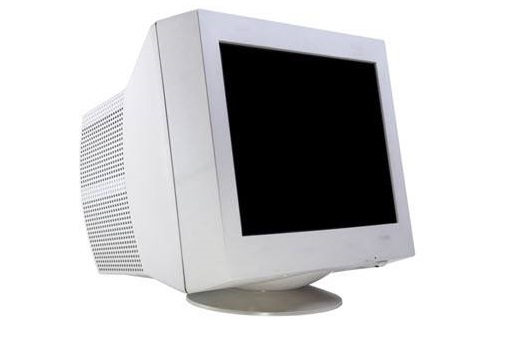
CRT monitor was the most commonly used monitor in the early 2000s. Also called VDU (Visual Display Unit). This monitor uses a cathode ray tube. Which is also generally called a picture tube. Most monitors have a picture tube element, and this tube is called CRT.
To construct this cathode-ray tube, a vacuum tube, heaters, deflection, circuits, electron guns, and a glass screen are used. CRT monitors resemble older television sets. They are bulky, and together, they also consume a lot of energy. The power consumption of a CRT monitor is about 100 watts for a typical 19-inch display.
2. LCD (Liquid Crystal Display) Monitors
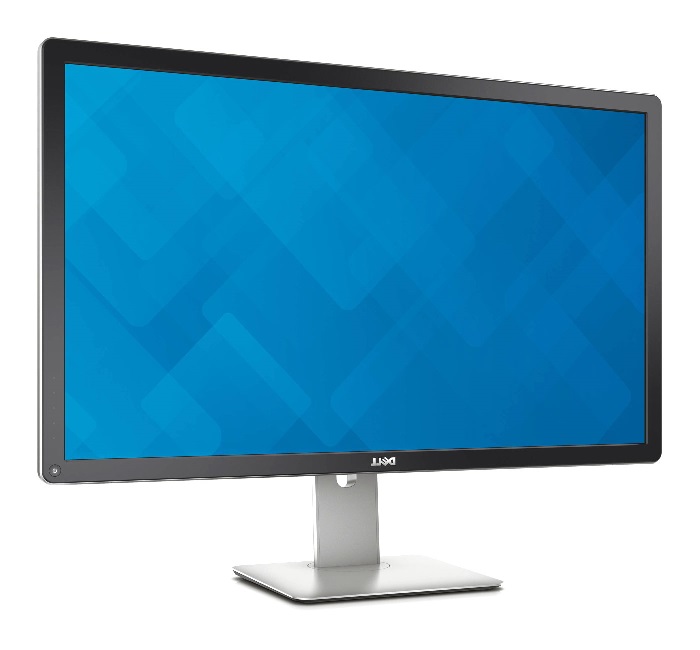
The LCD monitor screens use monochrome pixels. Today, LCD monitors are way more popular than CRT monitors and they are very attractive. The pixels in these monitors are arranged systematically between transparent electrodes and polarizing filters.
LCD monitors are of digital technology that forms a shape through various crystals on a flat surface. LCD monitors provide better graphic quality and they take up less space, and it reduce the use of energy. The power consumption of an LCD monitor is about 22 watts for a typical 19-inch display.
If you want an LCD monitor, we recommend Sceptre 24″ Professional Thin 75Hz 1080p LED.
3. LED (Light Emitting Diode) Monitors
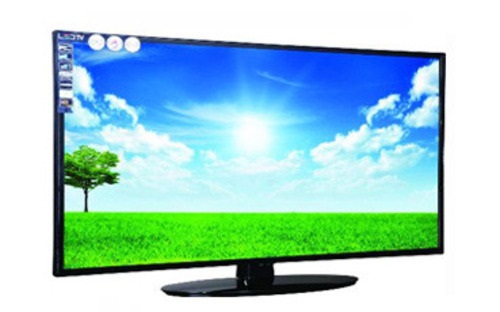
The LED monitor uses the latest technology in the market. This monitor consists of a flat panel or a slightly curved display that uses light-emitting diodes to run. These monitors use much less power than LCD and CRT monitors.
It does not use cold cathode fluorescent (CCFL) for lighting as LCD monitors do. The great thing about LED is that they are more durable than LCD and CRT monitors. Also, LED screens do not generate much heat while running. The power consumption of LED monitors is about 20 watts for a typical 19-inch display.
4. OLED Monitor
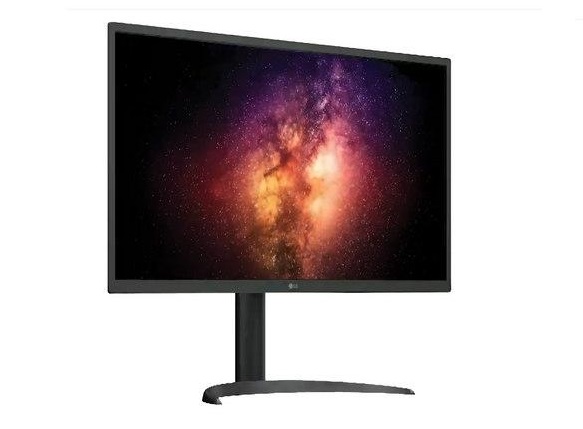
OLED monitors have faster pixel response rates and higher contrast ratios than conventional LCD panels but are much more expensive. Because of this, we do not recommend them for purchase. OLED technology has generally been on the market for quite some time but has not gained wide popularity due to high prices.
OLED technology, on the other hand, does not use LED backlighting. Instead, each pixel glows separately and functions as an independent light source. The power consumption of OLED monitors is about 21 watts for a typical 19-inch display.
5. Plasma Monitor
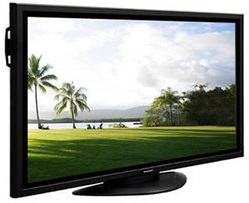
A Plasma panel is an array of gas-filled cells sandwiched between two parallel glass surfaces. The work of a plasma panel is based on the glow of a phosphor under the influence of ultraviolet radiation. Plasma Monitor is a modern and rather expensive device, which in a short period of time, has firmly entered the life of a domestic user.
The main feature of plasma is its bright and high-contrast image, which is extremely pleasing to the eye. The power consumption of Plasma monitors is about 38 watts for a typical 19-inch display.
Power Consumption Of Monitors In Different Modes
Now that we have listed what types of monitors we have, it’s time to see what operating modes are there. Depending on the mode configured on the machine, power consumption may be different. So let’s start:
1. “Active” Mode
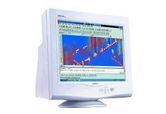
In Active Mode, a typical 19-inch monitor consumes about 20 Watts. The values of power dissipated by the computer are determined by averaging between “full load” and the normal “on” mode of the computer (where the processor is barely functioning). LCD screens only change their power very little according to the predominant color of the displayed image.
2. Standby Mode

In Standby Mode, a typical 19-inch monitor consumes between 5 to 10 Watts. When this mode is used, the computer reduces its power consumption to save energy (by Energy Star label standards). By default, most computers enter standby mode after 20-30 minutes, which makes it possible to reduce consumption.
The “standby” mode reduces the power level by cutting off the power to anything that is not useful, only the RAM and certain peripherals remaining “listening” (mouse, network card, etc.).
3. Shutdown Mode

In Shutdown Mode, a typical 19-inch monitor consumes between 0 to 5 Watts. In shutdown mode, we can see that some parts of the monitor remain powered on (like led lights on some models) and continue to dissipate power. Like all electronic devices, if they are turned off, that does not mean that they do not consume any electricity.
Average Power Consumption in Operating Modes
| Screen Type: | Active Mode [W] | Standby Mode [W] | Shutdown Mode [W] |
|---|---|---|---|
| Economical 15‘’ LCD | 15 Watts | 5 Watts | 5 Watts |
| High-end 17’’ LCD | 25 Watts | 5 Watts | 5 Watts |
| 17’’ economical LCD | 30 Watts | 5 Watts | 5 Watts |
| 17’’ LCD | 35 Watts | 5 Watts | 5 Watts |
| ** CRT 15’’ | 40 Watts | 10 Watts | 5 Watts |
| CRT 17’’ economical | 60 Watts | 3 Watts | 3 Watts |
| CRT 21’’ large format | 115 Watts | 5 Watts | 3 Watts |
Did you know that Wi-Fi Routers also consume energy? To know more, read the Power Consumption of WiFi Routers article.
2 Ways To Estimate the Power Consumption of a Monitor

1. Rough Estimation of a Monitor
How much power does a monitor use? The simplest (but also the most imprecise) approach is a (rough) estimation. If you want to determine the power consumption of your desktop monitor, you basically have two options: measure or estimate.
First, let’s look at a simple example.
The watt number is more or less the current power consumption. Maximum power consumption and typical power consumption can be found in good, comprehensive datasheets. How many watts the monitor consumes varies.
If you are looking for an average value, you should calculate better with the typical power consumption. If you do not want to delve deeper into the subject, you can then estimate the monitor power consumption as follows:
24 ″ monitor = 25 watts
As already mentioned, the watt number describes the current power consumption. If you want to estimate the annual power consumption of the desktop monitor, the next step is to consider how many hours the monitor is in operation on average per day. You can use the following formula:
25 watts x 365 days x 3 hours = 27,375 Wh
In this example, we assumed the monitor was used for 3 hours daily. The electricity price in the United States is currently around $0.13 per kWh. Therefore, the electricity cost for this example will be around $3,55 per year.
2. Precise Estimation By Using The Software Tool
There are also software tools that can estimate the power consumption of the PC and monitor. For Windows, for example, the Joulemeter is available directly from Microsoft. This does not measure the power consumption exactly – there are no corresponding values. However, the utilization of the hardware resources is considered, and the power consumption is calculated approximately.
With a Mac, you can take a look at the “System Information” tool. The power consumption is specified here in the form of mAh and mV. Divided both by 1,000 results in Ah and V. The following formula can be used to determine power consumption:
- Ampere Hours x Volts = Watt Hours
It should be noted that the power consumption is measured in battery mode.
How to Actually Measure Power Consumption?
For me, the best and most accurate way to measure the power consumption of any device is by using a watt meter. The purchase of a Kill A Watt Meter is not too expensive and gives the most accurate result. That’s because the power consumption is measured directly at the socket. To measure the monitor’s power consumption, you must use a kill-a-watt meter and plug it into the socket.
Watch this video to see how to use a Kill-A-Watt-Meter:
Related Article: Does Sleep Mode Damage Computer? Expert Explain
Table Review of Power Consumption of Monitors
Here, we will list the power consumption of all popular desktop monitors on the market. Depending on the manufacturer’s information, either the maximum power consumption, the typical power consumption, or both are specified.
The maximum power consumption was a value that was determined when the monitor was at full brightness. The “typical power consumption”, however, was measured with reduced brightness and should come closer to the consumption under everyday conditions.
Power Consumption of 19-inch Monitors (Watts)
| Manufacturer | Model designation | Power consumption max. | Power consumption typ. |
|---|---|---|---|
| Compaq | Wf1909v | 49 W | 27 W |
| Dell | Dell 1909W | 47 W | 25 W |
| EIZO | S1932 | 45 W | 24 W. |
| EIZO | S1961 | 40 W | 21 W |
| Samsung | 943BMR ivory | 72 W | 36 W |
| Samsung | 943BM | 70 W | 34 W. |
| Samsung | 943BR ivory | 70 W | 34 W. |
| Samsung | 943BR | 72 W | 34 W. |
Power Consumption of 20-inch Monitors (Watts)
| Manufacturer | Model designation | Power consumption max. | Power consumption typ. |
|---|---|---|---|
| Dell | Dell 2009WFP | 70 W | 42 W |
| Dell | Dell P2010H | 45 W | 20 W |
| HP | HP 2009v | 47 W. | 22 W |
| Samsung | 2033SN | 75 W | 37 W |
| Samsung | F2080 | 82 W | 40 W |
| Samsung | T200HD | 95 W | 50 W |
| Samsung | T200 | 90 W | 40 W |
Power Consumption of 21-inch Monitors (Watts)
| Manufacturer | Model designation | Power consumption max. | Power consumption typ. |
|---|---|---|---|
| Compaq | Q2159 | 45 W | 24 W |
| EIZO | L997 | 75 W | 33 W |
| EIZO | S2100 | 70 W | 31 W |
| HP | HP 2159m | 55 W | 27 W |
| HP | HP 2159v | 45 W | 22 W |
Power Consumption of 22-inch Monitors (Watts)
| Manufacturer | Model designation | Power consumption max. | Power consumption typ. |
|---|---|---|---|
| Dell | Dell P2210 | 45 W | 22 W |
| EIZO | S2202W | 51 W | 23 W |
| EIZO | S2232W | 90 W | 32 W. |
| EIZO | S2243W | 90 W | 36 W |
| HP | HP 2229h | 105 W | 65 W |
| Samsung | 2243WM | 95 W | 47 W. |
| Samsung | 2263DX | 100 W | 52 W |
| Samsung | 2263UW | 95 W | 45 W |
| Samsung | LD220 | 87 W | 40 W |
| Samsung | T220 | 92 W | 45 W |
Power Consumption of 23-inch Monitors (Watts)
| Manufacturer | Model designation | Power consumption max. | Power consumption typ. |
|---|---|---|---|
| Dell | Dell SP2309W | 95 W | 65 W |
| EIZO | EV2303W | 33 W | 17 W. |
| EIZO | EV2333W | 45 W | 24 W. |
| HP | HP 2309m | 56 W | 34 W |
| HP | HP 2309v | 51 W | 29 W |
| Samsung | 333SW | 85 W | 45 W |
| Samsung | 2333HD | 95 W | 55 W |
| Samsung | F2380M | 100 W | 45 W |
| Samsung | P2370 | 80 W | 30 W |
| Samsung | XL2370 LED | 65 W | 28 W |
Power Consumption of 24-inch Monitors (Watts)
| Manufacturer | Model designation | Power consumption max. | Power consumption typ. |
|---|---|---|---|
| Dell | Dell 2408WFP | 110 W | 57 W |
| Dell | Dell G2410 | 42 W | 20 W |
| EIZO | SX2461W | 110 W | 46 W |
| EIZO | SX2462W | 95 W | 47 W. |
| Samsung | 245T | 170 W | 130 W |
| Samsung | 2433BW | 95 W | 50 W |
| Samsung | P2470HD | 95 W | 52 W |
| Samsung | P2470H | 85 W | 42 W |
| Samsung | T240HD | 105 W | 75 W |
Power Consumption of 25-inch Monitors (Watts)
| Manufacturer | Model designation | Power consumption max. | Power consumption typ. |
|---|---|---|---|
| HP | HP 2509m | 80 W | 50 W |
Power Consumption of 26-inch Monitors (Watts)
| Manufacturer | Model designation | Power consumption max. | Power consumption typ. |
|---|---|---|---|
| Samsung | 2693HM | 140 W | 110 W |
| Samsung | T260HD | 105 W | 70 W |
| Samsung | T260 | 85 W | 55 W |
Power Consumption of 27-inch Monitors (Watts)
| Manufacturer | Model designation | Power consumption max. | Power consumption typ. |
|---|---|---|---|
| Dell | Dell 2709W | 160 W | 105 W |
| EIZO | SX2761W | 115 W | 53 W |
| Samsung | 275T plus | 180 W | 130 W |
| Samsung | P2770HD | 105 W | 62 W |
| Samsung | P2770H | 90 W | 50 W |
Power Consumption of 30-inch Monitors
| Manufacturer | Model designation | Power consumption max. | Power consumption typ. |
|---|---|---|---|
| Dell | Dell 3007WFP | 177 W | 147 W |
| Dell | Dell 3008WFP | 250 W | 163 W |
| EIZO | SX3031W | 170 W | 82 W |
| Samsung | 305T plus | 150 W | 130 W |
Note! Keep in mind that power consumption can differ slightly among monitors. These figures are general estimates, and certain monitors may have higher energy costs based on your location and the cost of electricity per hour.
FAQ: People Also Ask
How much power does a 27 monitor use?
A larger screen typically requires more power to display its contents; the same principle applies to monitor resolution. Clearer images demand more energy. Thus, a 27-inch monitor consuming 19kWh/1000h is more energy-efficient compared to a 24-inch monitor with the same energy consumption.
Is 4K overkill for a monitor?
If your primary purpose is to watch 4K films TV series, browse the web, or engage in other standard multimedia tasks, a 4K monitor can be an excellent option. Surprisingly, certain 4K monitors might even be more affordable than some 1440p screens! There’s no need for a high-end system for these activities unless you’re gaming.
Final Thoughts
In conclusion, the article has offered a concise overview of the power consumption of monitors. Keeping your monitor on standby ensures minimal energy use compared to other household devices. Moreover, addressing heating, cooling, and lighting concerns with your monitor can further reduce energy consumption. I hope this article has helped you, and if you have any other questions, feel free to comment below.







